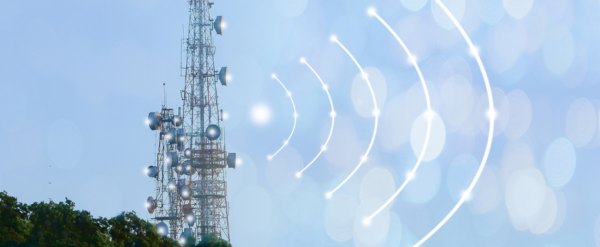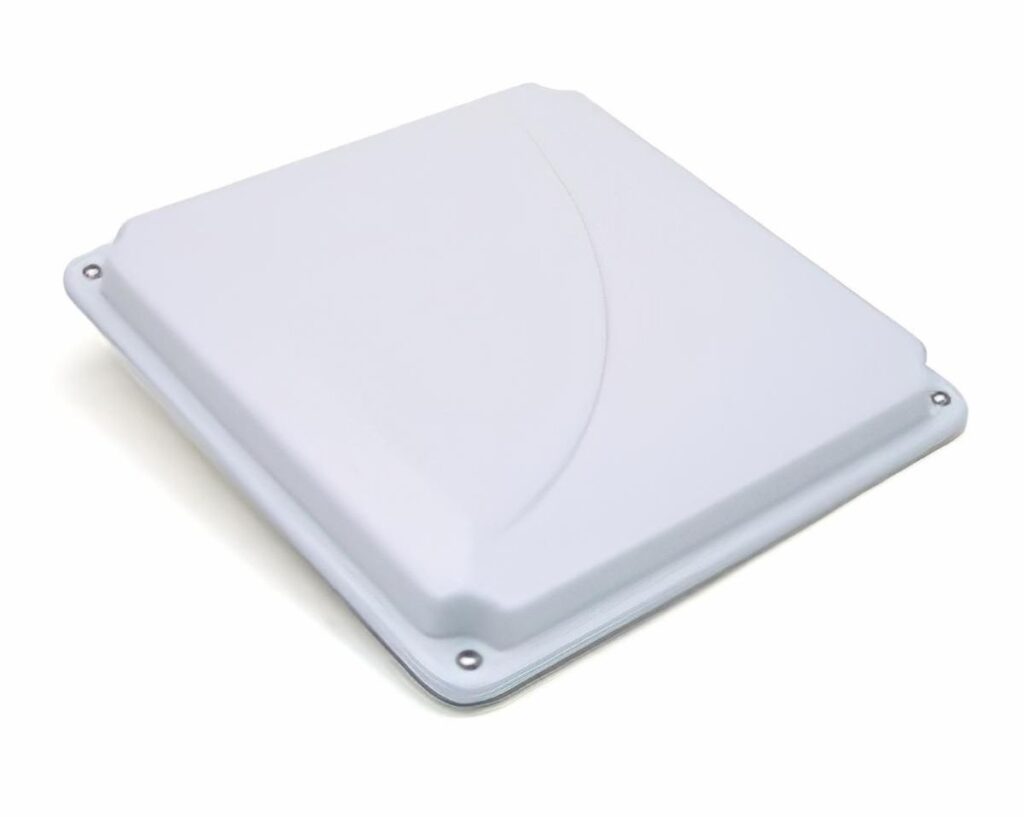
Article by Henry Martel, Field Application Engineer, Antaira Technologies
In an increasingly connected industrial landscape, the demand for faster and more reliable network connectivity through wireless communication technologies is at an all-time high. As organizations strive for seamless wireless communication connectivity, the role of antennas, particularly high-gain antennas, becomes pivotal in link quality.
For some, however, the technicalities of high-gain antennas can seem like a web of jargon and specifications. In this article, I’ll attempt to unravel the complexities and shed light on the often-overlooked world of high-gain antennas.
By the end, you’ll not only have a clearer understanding of whether a high-gain antenna is right for your business or wireless networking equipment, but also what criteria to consider when selecting the correct model to build a better wireless access network.
How Antennas Work in Wireless Communication
Radio waves are used by wireless devices to communicate with the internet and one another. Data packets from the sending wireless network device are converted from electrical impulses into radio waves which are broadcast by a transmitting antenna in frequencies typically in the 2.4, 5, and 6 GHz bands. On the receiving end, an antenna transforms the broadcast radio waves back into electrical signals which the receiving wireless device processes and translates into text, sound, or graphics. Both receiving and transmitting antennas are found in wireless networking devices such as laptops, smartphones, tablets, and wireless routers.
What is a High-Gain Antenna?
A high-gain antenna (HGA) is a specialized kind of wireless antenna that boosts the strength of a radio signal by focusing it in one direction instead of propagating it 360° as with an omnidirectional antenna. Basically, as the gain goes up, the angle of signal radiation decreases. Long-distance point-to-point radio communication, and point-to-multipoint wireless data link applications must use HGA technology, although directional antennas may have other uses as well.
The degree to which an HGA can focus its wireless communication signals in a specific direction is indicated by a metric known as “decibels relative to isotropic” or simply, dBi. Often confused with dBm (decibel milliwatt) that indicates an antenna’s total output power, the dBi only refers to the antenna’s directional intensity. The higher the dpi, the narrower a beam transmits in the antenna’s intended direction. Conversely, low dBi antennas sacrifice long-distance communication capacity in favor of broad short-range transmission coverage by spreading signals across wider angles.
So, what dBi is right for you? In an office setting on a single floor without obstructions other than cubicles, a mid-range dBi of 2 to 5 is likely sufficient. In contrast, a point-to-point data link spanning several miles will require a dBi in a range of 20 to 30, if it has access to a clear line-of-sight with no obstacles. A large indoor space that requires spherical wireless coverage, such as an empty warehouse with open space and pallet racks, may find a 0 dBi works best. You may even leverage a negative dBi antenna to create a wireless internet “bubble” covering only a restaurant, coffee shop or other high-density small space.
Pros and Cons of High-Gain Antennas
HGAs demonstrate their value by directing radio waves in a narrow beam over a tight horizontal plane. By providing directional concentration of energy to radio receivers and transmit them, HGAs effectively reduce signal loss, minimize potential interference, and increase transmission distance.
Yet higher network performance comes with some drawbacks. For one, HGAs like Yagi and parabolic types may be bulky, making mounting them more difficult, and they feature a more complex design than standard antennas. Also, HGAs are typically more expensive. In addition, the narrowly focused beams, open the potential for coverage gaps or dead zones, as well as vulnerability to a weakened signal when penetrating walls, floors or other physical obstructions. Signal drop-out will be frequent. Outdoors, for example, the narrow signal will be obstructed by hills, trees and other buildings in dense urban areas.
Installing omni or lower-dBi antennas alongside high-gain antennas should eliminate coverage gaps. You can also explore simply adjusting the antenna’s direction while monitoring signal levels until finding the ideal orientation. Another solution is to mount an HGA as high as possible since height adds to signal strength. An antenna mounted at 120-feet will broadcast a signal that is 8-10x stronger than if the same antenna was mounted at 35-feet.
Finally, it is critical to be informed about any local regulatory limitations on antenna gain. The maximum power that wireless antennas are permitted to have in certain locations and networks is limited to avoid interfering with other networks’ cables or devices.
What to Look for in Wireless Networks
There are multiple factors to consider when choosing the appropriate HGA system for a working environment. Each type of antenna and system offers its own advantages and disadvantages. In general, these factors include overall system design, antenna size, beamwidth, gain (dBi), frequency, and connectors.
- Design: The structure and form of the antenna and transmitter are referred to as its design. Variations can impact both the antenna and transmitter device’s functionality, signal quality and appearance.
- Size: Gain and directivity of transmission of the antenna increase with its size. But greater size also translates into greater weight, volume, cost and expense.
- Beamwidth: The bandwidth of an antenna determines its directionality and coverage area. Antenna beamwidth and gain have an inverse relationship. The narrower an antenna’s beamwidth, the more concentrated the signal is in that direction and therefore the better suited it is for long-range wireless communication. Of course, a narrower beamwidth also means less coverage area. Beamwidth will help you plan coverage for a satellite television or radio, in given area while also determining whether nearby antennas will interfere with each other.
- Gain: As we mentioned earlier, the higher the gain measured in dBi, the stronger the signal in the direction the antenna is pointed at. As with beamwidth, a higher gain also means less coverage area.
- Frequency: The range of frequencies that an antenna or device may receive, transmit or broadcast data on is its frequency band. Your antenna must support the carrier’s or device’s frequency band, i.e., 2.4 GHz.
- Connectors: HGAs receivers may use specialized antenna connectors such as SMA, RP-SMA, or N-type to connect to devices. If you’re considering an HGA receiver, ensure compatibility with the device’s connector type.
Antaira has several options in different frequencies and dBi ranges for customers looking for HGAs or omnidirectional antennas, all built ruggedly for outdoor and industrial environments.
AUTHOR: Henry Martel
Henry Martel is a Field Application Engineer with Antaira Technologies (www.antaira.com). He has over 10 years of IT experience along with skills in system administration, network administration, telecommunications, and infrastructure management. He has also been a part of management teams that oversaw the installation of new technologies on public works projects, hospitals, and major retail chains.

The Antaira ANT-PA-2414 directional panel antenna can broadcast WiFi signals on the 2.4 GHz frequency. Ruggedly built for outdoor installations, the 14dBi antenna can be connected to most industrial wireless access points, clients, bridges or bluetooth devices (click on image to download)

Antaira Technologies is a leading developer and manufacturer that provides high-quality industrial networking and communication product solutions. Since 2005, Antaira has offered a full spectrum of product lines that feature reliable Ethernet infrastructures, extended temperature tolerance, and rugged enclosure designs. visit: antaira.com
See more articles on: Antaira Technologies
Source: antaira.com
